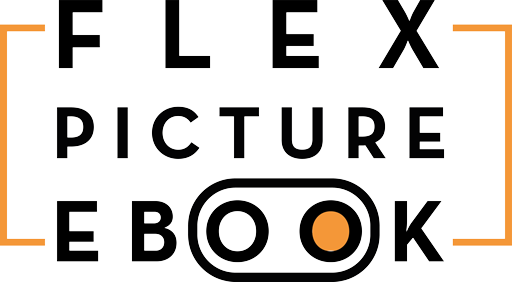AN INNOVATIVE CONCEPT OF AN ACCESSIBLE ILLUSTRATED DIGITAL BOOK
THE AIM OF THE PROJECT
The European Flex Picture Ebook project is the fruit of collaborative work between 7 European organisations specialising in visual, hearing and cognitive impairment, as well as digital accessibility and publishing specialist. All these partners have come together to work towards a common goal: to make illustrated books accessible to children with disabilities by adapting them into an enhanced digital version in the standard EPUB3 format, in order to correct the breakdown in equal opportunities in access to reading pleasure, whether independent or shared, and to strengthen their inclusion in education.
Recent developments in accessible digital publishing have focused mainly on access to text. Here, the Flex Picture Ebook project also provides access to illustrations, which are so important for making a text attractive to children, but also for helping them to understand and remember it. The aim is to make reading ever more accessible, while reducing the cognitive load, so that all children can simply enjoy reading.
This overall objective can be broken down into 4 sub-objectives:
- Enable all children with special educational needs to read the same book at the same time independently as the other children in a class.
- Contribute to a more egalitarian education and a common culture for all children
- Help carers, non-specialist teachers to have a better understanding of disability and digital accessibility, help them comprehend what their children/pupils see (legibility, comprehension) and the specific needs they have as a result.
- Encourage publishing practices to evolve so that there is a genuine range of accessible illustrated books, both in terms of quantity and quality, in Europe and elsewhere.
5 LEVELS OF READABILITY FOR ILLUSTRATIONS
A real innovation, the Flex Picture Ebook digital illustrated book concept can be completely customised by children : Each illustration has been reworked into 5 levels of readability, from the most detailed to the most pared-down, while taking care to retain the essential elements needed for understanding:
- as close as possible to the original
- while taking care to reinforce contrasts
- removal of set elements not present in the text
- simplification of the characters and removal of perspective
- removal of set elements to retain only the characters/ simplification of the main character
The illustration settings are complemented by visual and sound animations to aid comprehension. Finally, children can trigger and adjust all these functions intuitively.
The prototype was designed in France by the association Les Doigts Qui Rêvent with the support of the French Ministry of Education and the Bourgogne-Franche-Comté region, and under the scientific responsibility of Dannyelle Valente with Anna Rita Galiano and Maureen Cosnard of the DIPHE Laboratory (Development, Individual, Process, Disability and Education) at the Université Lumière Lyon 2 and Édouard Gentaz, Lola Chennaz and Alexandre Kalonji of the SMAS Laboratory (Sensory-Motor-Affective-Social Development) at the University of Geneva. The first title to come out of this project is Émile veut une chauve-souris” (text by Vincent Cuvellier and illustrations by Ronan Badel). We would like to thank the French publisher Gallimard jeunesse for their permission to translate this text into the language of each project partner.
DETAILS OF THE PROJECT STAGES
The project has 4 main components:
- Prototype Flex Picture Ebook “Émile veut une chauve-souris” (Text by V. Cuvellier and illustrations by R. Badel) in 5 languages:
- English
- French
- German
- Italian
- Lithuanian.
- Tested educational scenarios for using the Flex Picture Ebook prototype in the classroom:
- to enable teachers to use children’s literature in the classroom to achieve common educational objectives for all pupils at the same time
- to develop the knowledge and uses of non-specialist teachers in relation to disability and digital accessibility.
- Tools and guidelines to improve the creation of books based on the Flex Picture Ebook concept:
- Guidelines for adapting illustrations for children with severe visual impairments and learning difficulties
- Specification of the methodology and software tools for adapting books
- Training material for adapting electronic books.
- Training for content producers to promote the publication of books using the Flex Picture Ebook concept:
- Informing teachers, publishers, transcribers, parents and librarians of the existence of accessible illustrated digital resources for more qualitative and inclusive educational learning.
- Convince teachers, publishers and transcribers to use our method and field-tested working tools.
- Train teachers, publishers and transcribers in our method and working tools”.

